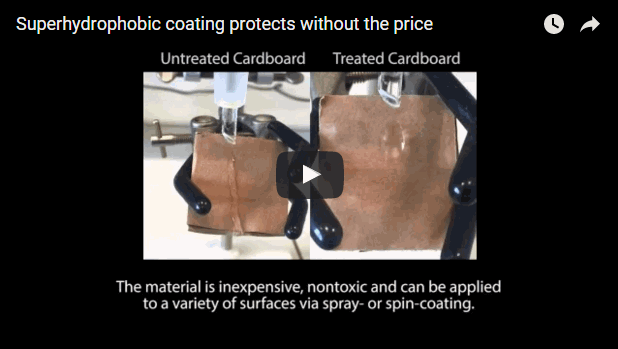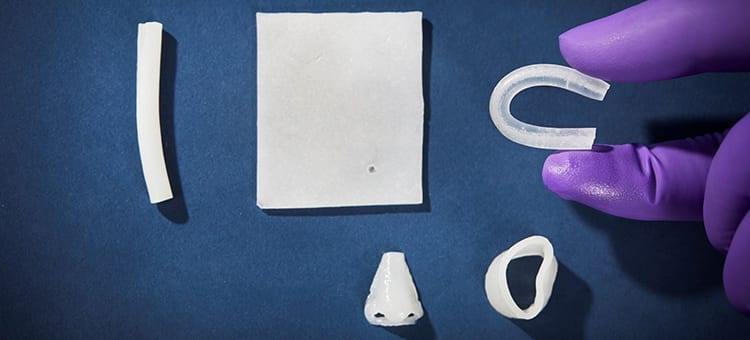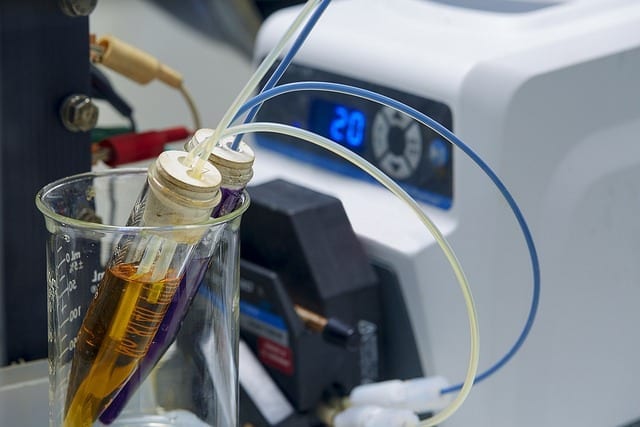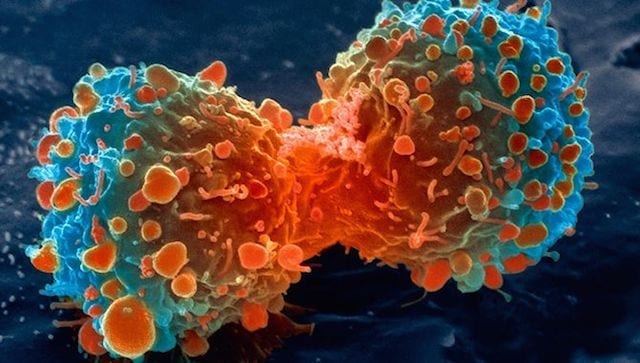
‘Green’ project led by Rice, Swansea scientists matches best water repellant
A new class of superhydrophobic nanomaterials might simplify the process of protecting surfaces from water.
A material made by scientists at Rice University, the University of Swansea, the University of Bristol and the University of Nice Sophia Antipolis is inexpensive, nontoxic and can be applied to a variety of surfaces via spray- or spin-coating.
The researchers led by Rice chemist Andrew Barron reported their find in the American Chemical Society journal ACS Applied Materials and Interfaces.
The hydrocarbon-based material may be a “green” replacement for costly, hazardous fluorocarbons commonly used for superhydrophobic applications, Barron said.
“Nature knows how to make these materials and stay environmentally friendly,” Barron said. “Our job has been to figure out how and why, and to emulate that.”
The lotus leaf was very much on their minds as the researchers tried to mimic one of the most hydrophobic — water-repelling — surfaces on the planet. Barron said the leaf’s abilities spring from its hierarchy of microscopic and nanoscale double structures.
“In the lotus leaf, these are due to papillae within the epidermis and epicuticular waxes on top,” he said. “In our material, there is a microstructure created by the agglomeration of alumina nanoparticles mimicking the papillae and the hyperbranched organic moieties simulating the effect of the epicuticular waxes.”
Fabrication and testing of what the researchers call a branched hydrocarbon low-surface energy material (LSEM) were carried out by lead author Shirin Alexander, a research officer at the Energy Safety Research Institute at the Swansea University Bay Campus.
There, Alexander coated easily synthesized aluminum oxide nanoparticles with modified carboxylic acids that feature highly branched hydrocarbon chains. These spiky chains are the first line of defense against water, making the surface rough. This roughness, a characteristic of hydrophobic materials, traps a layer of air and minimizes contact between the surface and water droplets, which allows them to slide off.
To be superhydrophobic, a material has to have a water contact angle larger than 150 degrees. Contact angle is the angle at which the surface of the water meets the surface of the material. The greater the beading, the higher the angle. An angle of 0 degrees is basically a puddle, while a maximum angle of 180 degrees defines a sphere just touching the surface.
The Barron team’s LSEM, with an observed angle of about 155 degrees, is essentially equivalent to the best fluorocarbon-based superhydrophobic coatings, Barron said. Even with varied coating techniques and curing temperatures, the material retained its qualities, the researchers reported.
Potential applications include friction-reducing coatings for marine applications where there is international agreement in trying to keep water safe from such potentially dangerous additives as fluorocarbons, Barron said. “The textured surfaces of other superhydrophobic coatings are often damaged and thus reduce the hydrophobic nature,” he said. “Our material has a more random hierarchical structure that can sustain damage and maintain its effects.”
He said the team is working to improve the material’s adhesion to various substrates, as well as looking at large-scale application to surfaces.
Read more: Superhydrophobic coating protects without the price
The Latest on: Sperhydrophobic nanomaterials
[google_news title=”” keyword=”superhydrophobic nanomaterials” num_posts=”10″ blurb_length=”0″ show_thumb=”left”]
via Google News
The Latest on: Superhydrophobic nanomaterials
- Nanotechnology for Regenerative Medicine: Nanomaterials for Stem Cell Imagingon April 23, 2024 at 5:00 pm
Nanomaterials must be designed to interact with proteins and cells without interfering with their biological activities Nanomaterials must maintain their physical properties after surface ...
- Nanomaterials newson April 18, 2024 at 5:00 pm
Carbon dots (CDs) are an intriguing class of nanomaterials that have attracted a great deal of attention in recent years. These carbon-based materials possess excellent fluorescence properties ...
- Physicists explain--and eliminate--unknown force dragging against water droplets on superhydrophobic surfaceson April 15, 2024 at 5:00 pm
Physicists explain--and eliminate--unknown force dragging against water droplets on superhydrophobic surfaces. ScienceDaily . Retrieved April 22, 2024 from www.sciencedaily.com / releases / 2024 ...
- CHEM.5660 Nanomaterials and Nanostructures (Formerly 84.566)on April 8, 2024 at 8:29 am
Research and technology development in nanoscience and nanotechnology aim at understanding the fundamental nanoscale phenomena, synthesizing, fabricating and imaging nanomaterials and nanostructures, ...
- What are Nanomaterials?on August 31, 2023 at 12:33 am
Nanomaterials are materials with at least one external dimension that measures 100 nanometers (nm) or less or with internal structures measuring 100 nm or less. The nanomaterials that have the same ...
- MS in Nanomaterialson December 9, 2022 at 1:56 am
The graduate program in nanomaterials from Drexel Engineering prepares professionals for applying deepened skillsets and knowledge that will further your career. What is a Master’s in Nanomaterials? A ...
- Nano, it’s a small world after all: how tiny are nanomaterials and why are they useful?on December 5, 2022 at 10:20 pm
Nanomaterials have at least one of their dimensions (length, width or height) between 1nm to 100nm (see graphic). In the microscopic nano world, properties such as colour, melting point and ...
- Nanomaterials Databaseon May 19, 2022 at 8:49 pm
The classification of nanomaterials is based on the number of dimensions of a material, which are outside the nanoscale (
- Chapter 10: Nanomaterialson January 24, 2022 at 7:10 pm
Nanomaterials are materials with one, two, or three external dimensions in the size range of 1 – 100 nm. Subcategories of nanomaterials include: 1) nanoplates, which have one external dimension at the ...
- A Fountain Of Superhydrophobic Arton June 24, 2016 at 7:56 pm
Superhydrophobic coating finds a new application in art through [Arthur Carabott] in the form of a bizarre fountain. A Master’s student in the Global Innovation Design course at the London Royal ...
via Bing News











